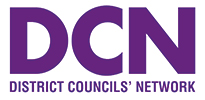District councils should take a leading role to make sure devolution improves services and outcomes for people and places through better collaboration, a new report issued by local government experts has claimed.
Entitled “Building Better Collaboration”, the report from University of Birmingham’s INLOGOV centre argues two-tier working has stood the test of time and calls for strong action and leadership from district councils to drive public service reform and economic growth in shire areas.
The academics identified five key themes that influence effective collaboration: leadership; selflessness; trust, momentum and risk.
- Selfless behaviour as a critical success factor is ‘completely role-appropriate for districts’ as place-shapers.
- In practical terms, this means districts councils shouldering a bigger share of the costs for innovative projects (economic growth, early intervention, homes or shared services) delivered for the good of the people and places they serve than they will get back in direct benefit.
- Audacious leadership means the willingness of chief executives and council leaders to take responsibility for driving change.
- Momentum is about ensuring that the pace vital for change is maintained, and small obstacles are not allowed to risk stalling projects.
- Building trust across and beyond local government to embrace the wider public sector, the third sector and commercial partners.
- A sense of shared risk injects far more urgency into risk management and failure prevention.
The report also recommended councils should pay heed to three key factors which influence collaborative performance at an individual, organisational and structural level.
Firstly this would require districts to nurture talented leaders able to drive collaborative working.
Secondly, improved performance would also depend upon an organisational culture of cross working with agencies across the board – including counties, central government departments and agencies, the voluntary sector, Clinical Commissioning Groups, commercial operators and Local Enterprise Partnerships.
And finally, on a structural level, this would involve district councils working together to face down and overcome regulatory and national policy hurdles.
To spread best practice the report contains 10 carefully selected case studies of successful collaboration across broad service areas – economic development health and wellbeing and service transformation.






